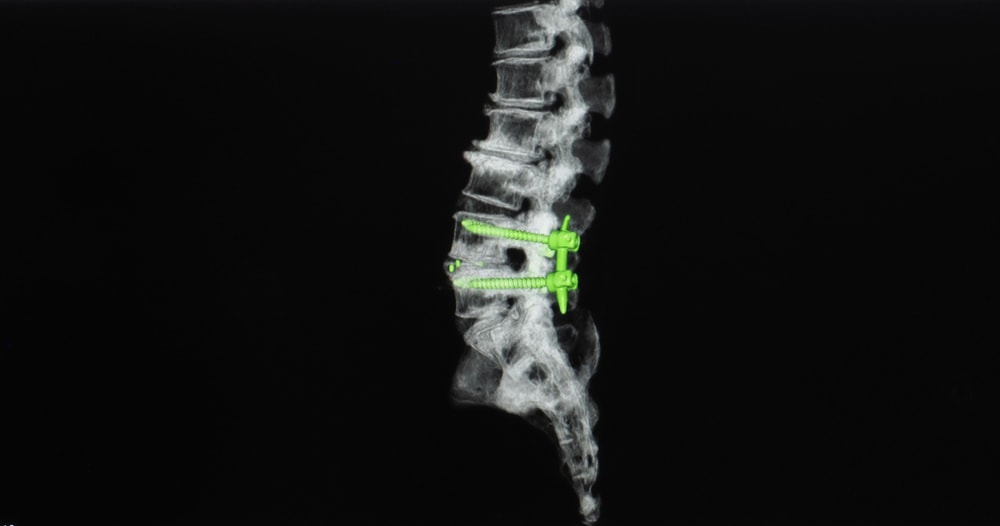Why Are Interventional Pain Physicians Becoming Spine Surgeons?

Credit: Shutterstock
We’ve all started attending in-person conferences again while some are still virtual. Having not been doing this for two years, one of the things that startled me was the number of booths selling percutaneous fusion devices to interventional pain physicians. So what’s up? Is this a good or a bad trend?
What Is an Interventional Pain Physician?
IPP doctors are those who come from several specialties including PM&R, anesthesiology, radiology, etc… who use image guidance to treat spine pain conditions. This includes quite a bit of steroid injections as well as other technologies like Radiofrequency Ablation or implanting devices. This is a great entrance qualification for the Regenexx network, as these doctors already know how to accurately guide needles to a specific spot. Hence, with additional training, IPP doctors make great regenerative medicine physicians for treating spine and peripheral joint issues.
Fusion Is a Dog with Fleas
As I have said many times, fusing a spinal segment is a dog with big fleas. What I mean by that is when you fuse a spinal segment or a joint, you insert hardware so it can no longer move. That lack of motion leads to overloading of the adjacent joints, which is a condition called ASD (Adjacent Segment Disease). See my video below to learn more:
What Is Percutaneous Fusion?
Fusing the spine used to be the purview of surgeons. Meaning that they installed screws and rods to fuse the spine through an open incision. However, over the past 5 years or so, the number of devices that can be installed using image guidance without surgery has exploded. These procedures use special devices to insert the same type of hardware that surgeons used to install through open surgery.
A specific example of this trend is SI fusion. Doctors can now bang dowel-type devices through the SI joint and make sure it never moves again. This is done by using a device that makes a hole in the skin. Is this a good idea? The SI joint is a critical shock absorber, so making it not move is a really bad thing. That means that these forces will instead begin to wear out the hip and bottom-most spinal segment (L5-S1).
Why Is this Happening?
Fusion is a dumb idea no matter if you do it surgically or with a percutaneous technique. This should only be done because there is no other option, but that should happen eyes wide open, meaning with full knowledge that the adjacent levels will in all likelihood fail due to the overload.
So why would IP doctors want to use these invasive techniques that destroy the normal biomechanics? I can only come to one regrettable conclusion – dollars and cents. Meaning these procedures pay well and the devices made for dollars in cheap labor countries can sell to insurance companies for thousands. Hence you have a great business plan that’s a win-win for the doctor and manufacturer, but a loss for the patient.
A Great Example of the Problem
At a recent physician conference, this was on the agenda:
“SI Joint Treatment
Fusion vs. Ablation vs. Rehabilitation”
Huh? The problems with fusion I’ve discussed. Ablation means destroying the nerves that take the pain from the SI joint. What’s not here on this agenda? Any regenerative medicine technique to help heal the damaged or stretched ligaments which are the usual cause of chronic SI joint instability and pain. That’s despite two randomized controlled trials showing that prolotherapy and PRP can help this problem (1,2). Why aren’t those options in this lecture? Again, dollars and cents. These are inexpensive treatments that aren’t usually covered by insurance and most physician offices are built to deal with insurance only. Hence, since SI joint fusion and ablation are covered and pay well, many IP physicians stay there, even though they make less sense for the patient.
It’s Time to Move Away from Fusion Towards Regeneration
Note to my colleagues. We need to stop destroying SI joints and other parts of the spine with hardware and move towards regeneration. I get that you have an insurance practice and people love what’s covered by their insurance. However, in all practical reality, most patients have huge out-of-pocket costs for these procedures performed in Ambulatory Surgery Centers. Hence, the amount paid out of pocket for prolotherapy or PRP will be the same to the patient as the amount paid for an SI fusion. So you’re not really doing this to save patients out-of-pocket expenses.
The upshot? As a patient, fusion is a bad idea whether it’s done through the skin (percutaneous) with a device or through open surgery. So please do your homework and stay away from these procedures. To my colleagues, just because you can doesn’t mean you should.
______________________________________
References:
(1) Singla V, Batra YK, Bharti N, Goni VG, Marwaha N. Steroid vs. Platelet-Rich Plasma in Ultrasound-Guided Sacroiliac Joint Injection for Chronic Low Back Pain. Pain Pract. 2017 Jul;17(6):782-791. doi: 10.1111/papr.12526.
(2) Kim WM, Lee HG, Jeong CW, Kim CM, Yoon MH. A randomized controlled trial of intra-articular prolotherapy versus steroid injection for sacroiliac joint pain. J Altern Complement Med. 2010 Dec;16(12):1285-90. doi: 10.1089/acm.2010.0031. PMID: 21138388.

NOTE: This blog post provides general information to help the reader better understand regenerative medicine, musculoskeletal health, and related subjects. All content provided in this blog, website, or any linked materials, including text, graphics, images, patient profiles, outcomes, and information, are not intended and should not be considered or used as a substitute for medical advice, diagnosis, or treatment. Please always consult with a professional and certified healthcare provider to discuss if a treatment is right for you.
